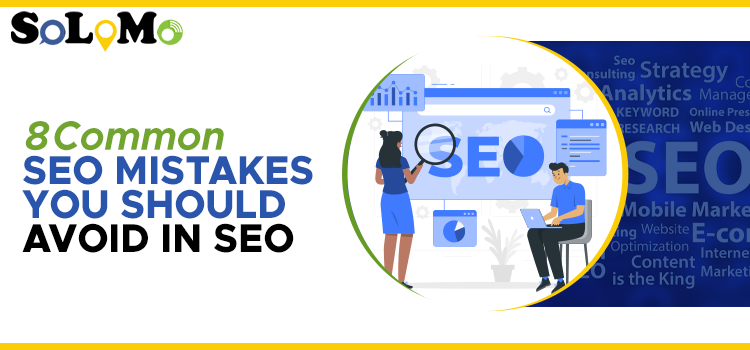We all want to boost our organic performance and stay ahead of competitors. We chase the latest strategies, insights, and expert tips to give our websites an edge. But sometimes, the most valuable lessons come from avoiding the mistakes others have made.
Let’s explore eight common SEO mistakes and how you can steer clear of them.
1. Seeing Organic Traffic as the Final Goal
Tracking organic traffic is an essential SEO metric, but it shouldn’t be the ultimate objective. Traffic alone doesn’t generate revenue — it even adds costs when considering hosting and tools.
Growing traffic is useful, but it needs direction. Ranking for irrelevant keywords or attracting visitors who bounce immediately won’t help your business thrive.
Think of traffic as an indicator rather than the main measure of success. What matters is attracting qualified leads who contribute to your company’s revenue. Align SEO goals with business outcomes to show real impact.
2. Neglecting User Experience
Prioritizing traffic volume over user intent is a common misstep. If your content draws people in but fails to meet their needs or guide them to the next step, it’s wasted effort.
SEO doesn’t end with rankings. A high-ranking page only delivers value if it engages the right audience and leads them through their journey — whether at the top or bottom of the funnel. Make sure your content not only attracts users but also serves them.
3. Relying on Short-Term Strategies
SEO is a long game. Planning for just a few months out of fear of future uncertainties can stunt growth. While staying flexible is important, a short-term mindset makes SEO reactive rather than strategic.
Aim for at least a 12-month strategy, with room for adjustments as algorithms evolve. Your overarching goals — like boosting organic revenue for a product launch — should remain steady, even if tactics change.
4. Blaming Algorithm Updates Without Evidence
It’s easy to point fingers at algorithm changes when traffic drops. But before jumping to conclusions, investigate thoroughly.
Is the drop consistent across search engines? Could there be technical issues or shifts in user behavior? By digging deeper, you can address the root cause rather than using updates as a convenient scapegoat.
5. Making Decisions Based on Faulty Data
Data is the backbone of SEO decisions, but flawed data leads to flawed conclusions. Poorly designed tests, inaccurate metrics, and unsegmented reports can distort your analysis.
For instance, testing meta descriptions without verifying what Google actually displays in search results won’t give you reliable insights. Always double-check your data sources, segment information properly, and avoid drawing conclusions from averages.
6. Distrusting Google Without Reason
It’s a common belief that Google misleads SEOs — but this assumption doesn’t hold up. Google Search is powered by complex systems, and their representatives try to simplify intricate processes.
Instead of assuming deception, treat Google’s advice as a starting point. Test their recommendations to see how they work for your site, and use your findings to fine-tune your SEO strategy.
7. Misusing Robots.txt for Indexing Control
Robots.txt tells search engines which pages to crawl, not which to index. Blocking a page in robots.txt doesn’t necessarily prevent it from appearing in search results — especially if it was crawled previously or linked from other sites.
Also, adding a noindex tag while blocking the page in robots.txt is counterproductive. If the bot can’t crawl the page, it can’t see the noindex tag. Use these tools carefully to avoid conflicting signals.
8. Sending Mixed Signals to Search Engines
Contradictory directives can confuse search engines and harm rankings. Common issues include:
· Adding a noindex tag to a page while canonicalizing it elsewhere.
· Linking to non-canonical versions of pages.
· Using hreflang tags with noindex, preventing proper localization.
· Pointing canonical tags to noindex pages.
Learn from Mistakes and Refine Your Strategy
These are just a few common SEO pitfalls, but avoiding them can set you on a path to better results. By learning from others’ experiences, you can refine your approach, prevent costly missteps, and build an SEO strategy that delivers lasting success.
Avoid these SEO mistakes and refine your strategy for long-term success. Stay ahead of the competition—visit solomomedia.com for expert SEO solutions!

